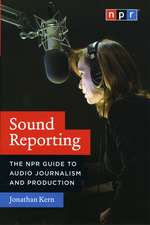Covering Congress
Editat de Everette Dennisen Limba Engleză Hardback – 18 dec 2020
| Toate formatele și edițiile | Preț | Express |
|---|---|---|
| Paperback (1) | 297.37 lei 6-8 săpt. | |
| Taylor & Francis – 31 iul 1997 | 297.37 lei 6-8 săpt. | |
| Hardback (1) | 653.87 lei 6-8 săpt. | |
| Taylor & Francis – 18 dec 2020 | 653.87 lei 6-8 săpt. |
Preț: 653.87 lei
Preț vechi: 877.29 lei
-25% Nou
Puncte Express: 981
Preț estimativ în valută:
125.11€ • 130.63$ • 103.55£
125.11€ • 130.63$ • 103.55£
Carte tipărită la comandă
Livrare economică 04-18 aprilie
Preluare comenzi: 021 569.72.76
Specificații
ISBN-13: 9781138521377
ISBN-10: 113852137X
Pagini: 188
Dimensiuni: 152 x 229 mm
Greutate: 0.51 kg
Ediția:1
Editura: Taylor & Francis
Colecția Routledge
Locul publicării:Oxford, United Kingdom
ISBN-10: 113852137X
Pagini: 188
Dimensiuni: 152 x 229 mm
Greutate: 0.51 kg
Ediția:1
Editura: Taylor & Francis
Colecția Routledge
Locul publicării:Oxford, United Kingdom
Cuprins
Part I: Overviews Congressional Index, 1. Congress—Boom Box and Black Box Part II: Media on the Hill 2. Evolution and Revolution, Covering Congress 3. Getting Out the Message 4. Speed Over Substance 5. Getting on the Radar Screen 6. Toward Civic-minded Media, 7. Making News, Making Law 8. Behind the Noise on the Floor 9. Big Picture and Local Angle 10. New Media, Old Messages, Congress Part III: Beyond the Beltway 11. Getting the Whole Truth 12. Showtime for Democracy 13. Hollywood Goes to Congress 14. Coverage—The Void at Home, 15. Kingmakers, Kingbreakers 16. Not a Pretty Picture 17. Unexpected Consequences—New Media and Congress 18. Race, Rules and Reporting, Covering Congress 19. Rayburn, the Workhorse Part V: Books 20. Many Questions, Few Answers
Descriere
Covering Congress explores those aspects of the relationship between the media and Congress that shape the news that reaches an information-seeking public.This is a necessary addition to the libraries of communications scholars, media specialists, political scientists, historians, and sociologists.











